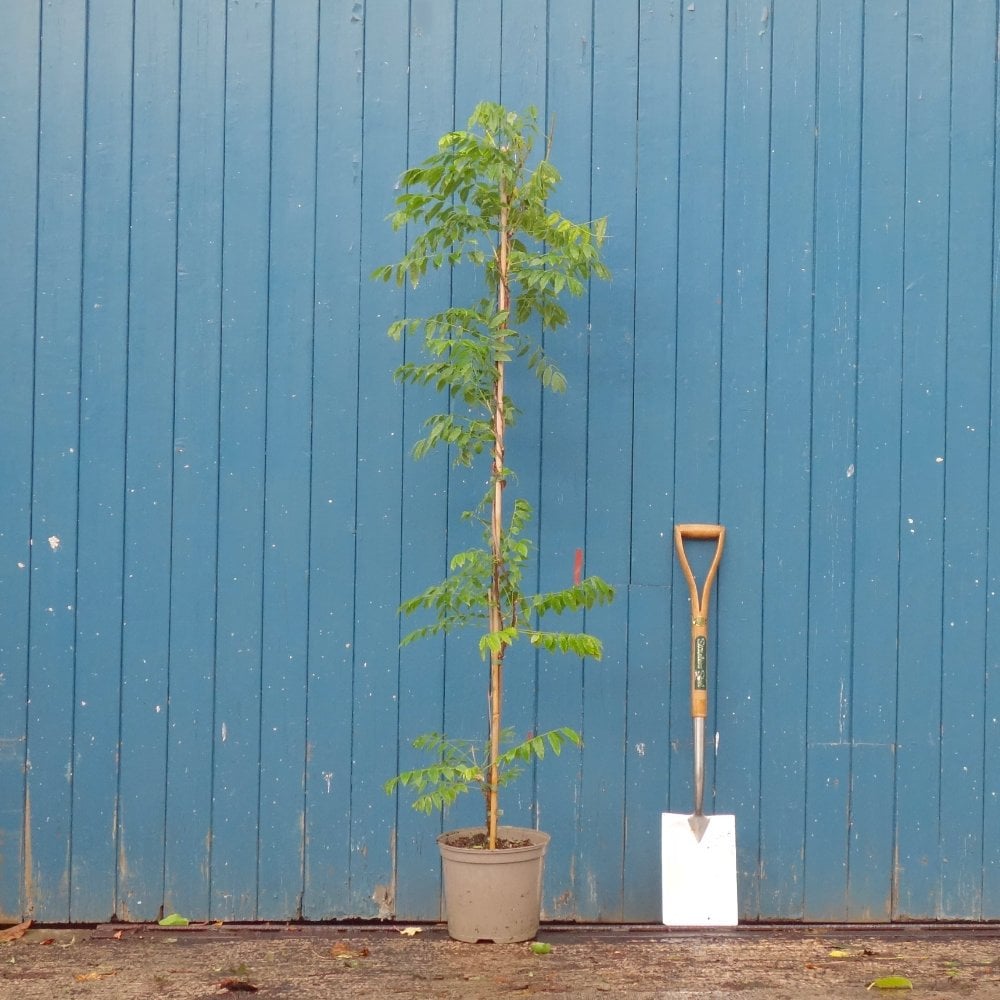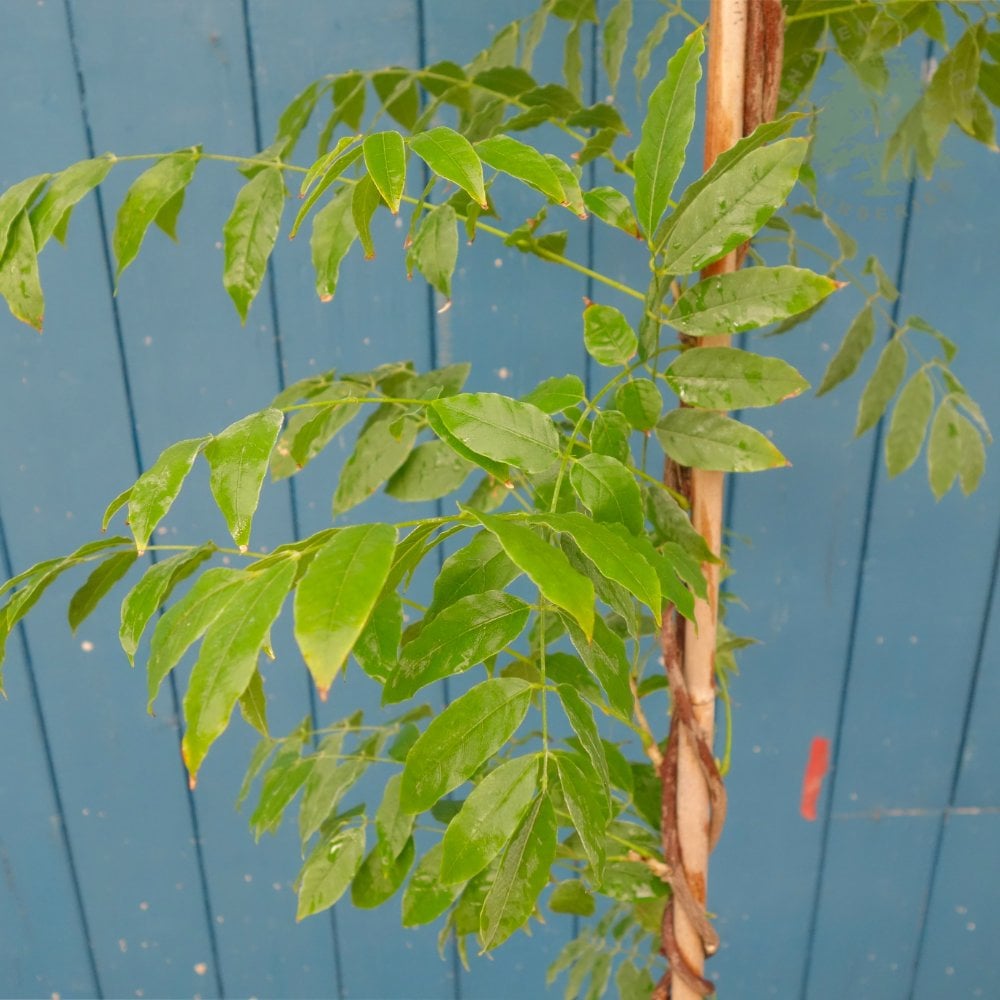Wisteria sinensis 'Caroline' Tree
Wisteria sinensis 'Caroline' Tree
Japanese Purple Wisteria

Wisteria sinensis 'Caroline' Tree
Japanese Purple Wisteria



Key features





Description
Wisteria sinensis 'Caroline' is a beautiful, twining climber; a relatively new variety that blooms earlier in the season than most other kinds of wisteria. In late spring to early summer, lilac blue flowers emerge in abundance, drooping from the plant in clusters (that can reach up to 30cm long!) for a stunning floral display. The blooms are highly fragrant and very popular with bees and butterflies. Seed pods which emerge after flowering add further interest into autumn, at which point you can expect the green pinnate foliage to turn bright shades of yellow.
Though it does tolerate some partial shade, we recommend planting Wisteria 'Caroline' in a full sun position for the best blooms—a sunny wall, pergola or trellis would be perfect. Wisteria 'Caroline' is fast-growing and will reach an approximate height and spread of 6 x 4 metres in 20 years. In maturity, it can reach heights of up to 9 metres.
All our Wisteria are grafted (rather than cuttings) so ought to flower earlier.
AKA Wisteria floribunda Caroline, Wisteria Caroline, Japanese Wisteria, Japanese Purple Wisteria
| Small shrubs (1-3) | Young trees & 4+ small shrubs | Select semi-mature trees & shrubs (1-4) | All other mature trees (any quantity) | |
|---|---|---|---|---|
| Mainland UK ex. Scottish Highlands | £10 | £12 | £35 | from £55 |
| Scottish Highlands & the Islands | From £30 | |||
| Outside Mainland UK | Currently we are unable to deliver outside of Mainland UK | |||
Product Details
Key features





Description
Wisteria sinensis 'Caroline' is a beautiful, twining climber; a relatively new variety that blooms earlier in the season than most other kinds of wisteria. In late spring to early summer, lilac blue flowers emerge in...
Wisteria sinensis 'Caroline' is a beautiful, twining climber; a relatively new variety that blooms earlier in the season than most other kinds of wisteria. In late spring to early summer, lilac blue flowers emerge in abundance, drooping from the plant in clusters (that can reach up to 30cm long!) for a stunning floral display. The blooms are highly fragrant and very popular with bees and butterflies. Seed pods which emerge after flowering add further interest into autumn, at which point you can expect the green pinnate foliage to turn bright shades of yellow.
Though it does tolerate some partial shade, we recommend planting Wisteria 'Caroline' in a full sun position for the best blooms—a sunny wall, pergola or trellis would be perfect. Wisteria 'Caroline' is fast-growing and will reach an approximate height and spread of 6 x 4 metres in 20 years. In maturity, it can reach heights of up to 9 metres.
All our Wisteria are grafted (rather than cuttings) so ought to flower earlier.
AKA Wisteria floribunda Caroline, Wisteria Caroline, Japanese Wisteria, Japanese Purple Wisteria
Planting & Care
Delivery Information
| Small shrubs (1-3) | Young trees & 4+ small shrubs | Select semi-mature trees & shrubs (1-4) | All other mature trees (any quantity) | |
|---|---|---|---|---|
| Mainland UK ex. Scottish Highlands | £10 | £12 | £35 | from £55 |
| Scottish Highlands & the Islands | From £30 | |||
| Outside Mainland UK | Currently we are unable to deliver outside of Mainland UK | |||
MORE TO GROW YOUR GARDEN


















